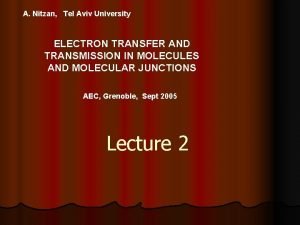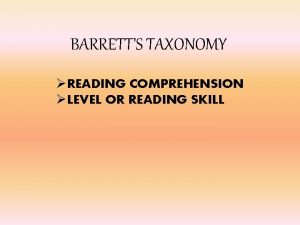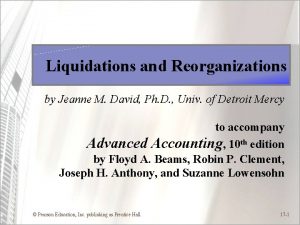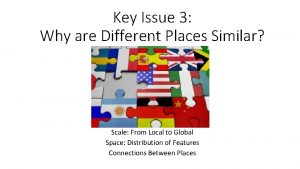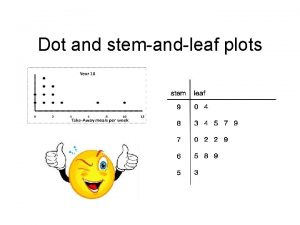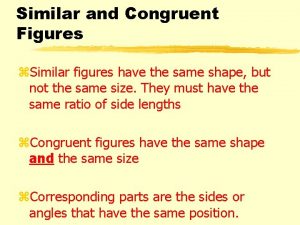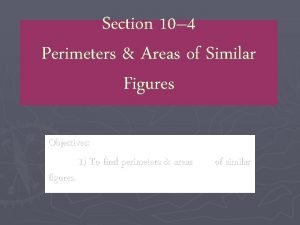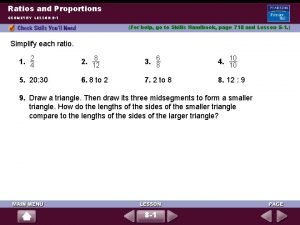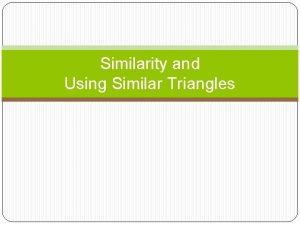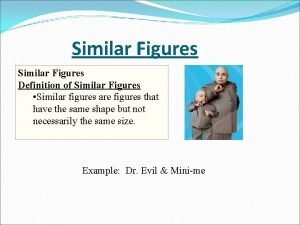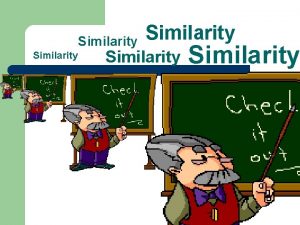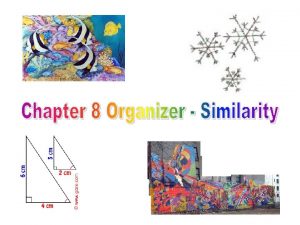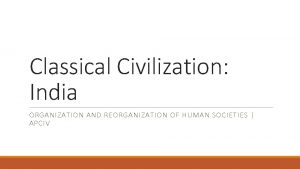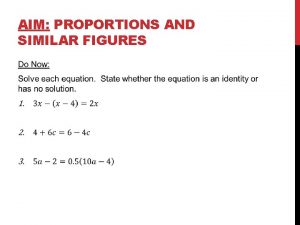ORGANIZATION AND REORGANIZATION HOW IS INDIA SIMILAR OR

























- Slides: 25

ORGANIZATION AND REORGANIZATION: HOW IS INDIA SIMILAR OR DIFFERENT THAN CHINA? • We know that China uses centralized govt, complex systems, Confucian ideals, to unify both people and state. • What does India do?

Human-Environment Interaction TWO MAJOR DYNASTIES: MAURYAN AND GUPTA: WHICH DYNASTY CONTROLLED MORE TERRITORY? Mauryan Dynasty Gupta Dynasty

Human-Environment Interaction Although the Hindu Kush Mts. Create a mountainous barrier region in the NW, from early e, nomadic groups found and navigated passes Khyber Pass Major Rivers: NW: Indus NE: Ganges

Human-Environment Interaction INTERACTION– GOOD FOR TRADE, BAD FOR INVASIONS India’s middleman role on the Silk Road allowed for many opportunities to profit off of trade. The constant flow of people and goods leave India a diverse place, in terms of people and ideas.

Human-Environment Interaction Predictable routes for trade, but had to wait for the right winds Monsoon winds affect climate of India, bringing regular periods of winds and heavy rains to certain regions. Monsoon winds are cyclical and were understood by Indian traders who traveled to Africa and SE Asia for trade.

RELIGION. . 2. 1 Religion • Polytheistic Beliefs Consolidate and Codify into beliefs of Hinduism, Brought by Aryans • Still polytheistic • Defined set of Gods, a hierarchy, led by Brahman, who appears in many incarnations • Expressed in series of Sanskrit writings, The Vedas, Mahabaratta • Belief in reincarnation, or cycle of rebirth of the “soul” • Dharma = law of right and wrong • Karma = consequences of one’s actions, can determine placement in caste system for next life. (Humans can go back to animals, and vice versa) • Very flexible, with people having close person and intimate relationship with particular version of Brahma • Home can have small temples for prayer and ritual • Temples can lead meditation and veneration • Expressive, emotional, and creative compared to other religions • Valuing of all life, including animals, bugs, and any life form. • Very patriarchal in Era 2 • Adoption of caste system (see other slide) • Cows are venerated and hold special place in society. • Strict Hindus are vegetarians

REINCARNATION, DHARMA, KARMA • Wheel represents reincarnation and the cycle of life • Souls are reborn until released to Brahman • Caste system was part of Hindu teachings, and living the duties of your caste in this lifetime was your duty. • One could possibly move up in the next life

BRAHMAN IS GOD, THE ONE COMPLETE AND UNIVERSAL SOUL, CREATOR OF ALL LIFE, BRAHMAN IS FORMLESS AND ENDLESS. Brahma Creator Vishnu Preserver Creates Harmony Shiva Destroyer Positive for Regeneration

Gods have different incarnations, and Vishnu is often seen through Krishna, a flute player Sometimes as a baby eating or stealing butter

Saraswati, the goddess of learning Hanuman—strong, courageous Warrior monkey

Religion will unify India • Caste system solidifies social classes, keeps people in power and people without status and power • Varnas = general term for social classes • Adaptability and personal connections to gods create enduring belief set not easily abandoned. HOW DOES RELIGION UNIFY INDIA?

BUDDHISM • Founded by Siddharth Gautama, he was warrior son of a prince. • Shocked by suffering and horror he saw when traveling outside of his homeland, renounced his world and began meditating, seeking truth. • Founded new religion, c. 550 BCE • Embraces many Hindu concepts such as dharma, reincarnation, but argues against the caste system. • Goal is to reach nirvana, or heaven, through enlightened state to be one with the universe

BUDDHA’S TEACHINGS/ REVELATIONS:

SPREAD OF BUDDHISM: • Buddhism spreads from India to Asia • Merchants and monks traveling along trade routes spread Buddhist teachings to China, SE Asia, and eventually Korea and Japan • Buddhism does NOT gain a majority following in India, instead landing more in East and Southeast Asia. • Cultural diffusion = the spread of a cultural trait to a new region that adopts that trait. China and Asia are now impacted by Buddhism

HOW DOES INDIA USE RELIGION TO ORGANIZE SOCIETY AND GOVERNMENT? • Hinduism (brought by Aryans) • and Buddhism. — • Social classes and ethical behavior • Why, if Buddhism begins in India, …. Why does Hinduism win out?

2. 2 Govts Mauryan Empire: Like the Qin Centralization Military Dictatorship Wars and Expansion • Chandragupta Mauryan, soldier, unifies India through conquest • Wealthy empire, central trade location • Strong military initially successful NEW FORMS OF GOVERNMENT AND EMPIRES

2. 2 Governments Laws/ Edicts ASHOKA, WARRIOR, CONVERSION TO BUDDHISM MAURYANS FALL SHORTLY AFTER HIS REIGN TO INVADERS • Conversion to Buddhism required rejection of warfare and violence as a way of life • Strong desire to unify India through law, virtue • Posting of edicts (laws, statements) throughout India to inform and inspire citizens to virtue • State promotion of Buddhism and Buddhist monasteries. • One of the first environmental laws and policies

Gupta Contributions: Decentralized, Regional Rule Return to Hinduism Strict Enforcement of Caste System, patriarchy Govt promotion of trade, education, knowledge GUPTA DYNASTY: REGIONAL RULE THROUGH RAJPUT (PRINCES)

2. 2 New Govt Systems Caste System: Unifying Tactic ü ü Keeps government leaders near the top Keeps lower class at the bottom Teaches acceptance of current status Provides orderly but unequal society Caste is technically illegal today in India, but still practiced in rural areas and still affects India culturally as people are slow to marry into different castes.

This is more detail than you are expected to know, but remember that Buddhism will branch into different schools of thought. Most Americans are familiar with a form of Zen Buddhism

NEW MARKETS AND TRADE: 2. 3 New Trade and Exchange India profits from trade. Everyone passes through India. Northern regions are exchange centers.

INDIA’S PROFITS FROM TRADE = WEALTHY EMPIRE India produces: Gems Cotton Spices Farm surpluses Indian Ocean Trade Routes: To East Coast of Africa and East to China and SE Asia Controlled by the Monsoon winds.

INDIA’S CULTURAL IMPACT: HUGE! • Art - world influence - human and animal basis, very imaginative and free. • Medicine - vaccinations, sterilizations • no dissections hampered understanding • Math concepts: pi, zero, decimal system • Nalanda - One of world’s first universities for learning. Scholars from all over the world would attend university at Nalanda.

India Hinduism/Buddhism Caste System Less Isolated Traders Important More regional/local Big discoveries Hugely important! Male Dominant Compare/Contrast Religion Social Structure Both created Inequality! Isolation/Trade Bureaucracy/Gov’t Math/Science Agriculture Family China Buddhism Confucian Order More Isolated Trade Important, traders NOT Centralized More practical use in Hugely important! Male Dominant

• Topics for modern Indian culture: • • Bindi Why cows/ Monkeys are sacred? Modern day issues with this • Hindu marriage customs v. American weddings • Math contributions of India
 Chapter 5 corporate liquidation and reorganization
Chapter 5 corporate liquidation and reorganization Perbedaan likuidasi partnership dan likuidasi corporate
Perbedaan likuidasi partnership dan likuidasi corporate Reorganization energy
Reorganization energy Reorganization energy
Reorganization energy Spatial reorganization definition
Spatial reorganization definition Barrett's taxonomy
Barrett's taxonomy Reorganization value adalah
Reorganization value adalah Similar disuelve a similar
Similar disuelve a similar Propiedades fisicoquímicas del agua
Propiedades fisicoquímicas del agua Lo similar disuelve lo similar
Lo similar disuelve lo similar Precipitancy creates prodigality
Precipitancy creates prodigality Block organization and point by point organization
Block organization and point by point organization Process organization in computer organization
Process organization in computer organization Lesson preparation siop
Lesson preparation siop Why are different places similar
Why are different places similar Dot plot vs stem and leaf
Dot plot vs stem and leaf Traditional expression of love, separation and loneliness.
Traditional expression of love, separation and loneliness. Similar and congruent triangles
Similar and congruent triangles Are the shapes similar worksheet
Are the shapes similar worksheet Two shapes that are similar are also congruent
Two shapes that are similar are also congruent Somatic cells vs gametes
Somatic cells vs gametes Similar figures
Similar figures 8-5 proportions in triangles
8-5 proportions in triangles Similar and dissimilar fraction
Similar and dissimilar fraction How are maritime and land based empires similar
How are maritime and land based empires similar Similar
Similar



